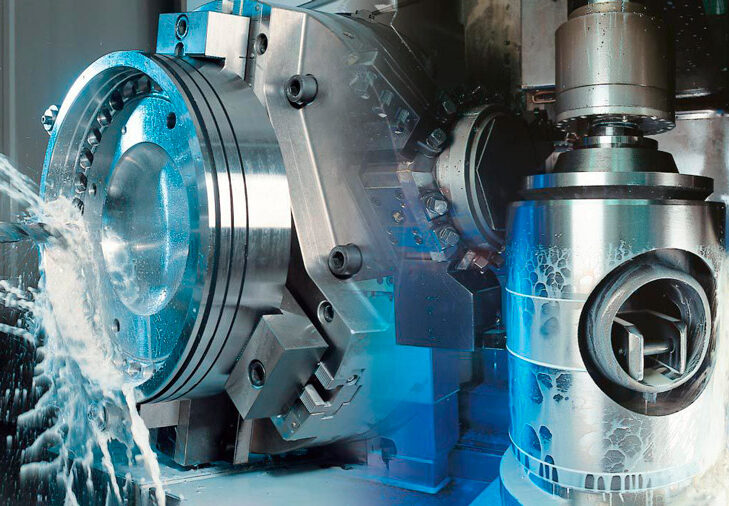
Modern real-time microbial testing methods still seen as underutilised
Microbial accumulation is commonly found in metalworking fluids (MWF) used in manufacturing. The proliferation of microorganisms is one of a relatively limited number of factors that can contribute to water-miscible MWF failure. Effective microbial contamination control is foundational to MWF maintenance. In turn, cost-effective microbial contamination control depends on timely, reliable, microbiological data.
The cost of an unscheduled outage for MWF system draining, cleaning, and recharging can cost as much as USD250,000 — including lost production opportunity costs. The annual incremental cost of switching from microbiological test technology that was developed in the 1850s — and which takes several days to get results — to modern methods that can provide results in a few minutes is typically less than USD2,000 per year. Still, most industry stakeholders cling to outdated test methods. Despite the limitations of culture testing, it remains popular because most users prefer to rely on tradition, rather than on technology. Much of the resistance to change is due to the lack of MWF microbiology education, says Frederick Passman, who founded Biodeterioration Control Associates (BCA), Inc. in 1992 in Princeton, New Jersey, U.S.A. BCA focuses on education, training, and root cause analysis of microbial issues in MWF and other industrial fluid systems.
There is an assortment of ways in which uncontrolled microbial contamination can contribute to MWF degradation or failure. Foul odour is likely a symptom of heavy microbial contamination in MWF. Less visible symptoms include difficulty in maintaining pH and reserve alkalinity, increased corrosivity, decreased emulsion stability in emulsifiable oil and semi-synthetic MWF, and decreased tool life. Such symptoms emphasise the importance of an effective MWF fluid management plan for controlling microbial contamination.
“Different stakeholders assess MWF performance according to their perspective on operations,” says Passman. Smaller operations may use odour as the sole determinant to replace MWF. Larger facilities generally employ a more sophisticated strategy where fluid managers assess the impact of microbial contamination on tool life, part rejection rates, filter indexing rates, and selective depletion of filter media.
It is not just the impact on tooling performance that is of concern when it comes to MWFs. A myriad of health risks include skin and respiratory complaints, and an elevated risk of certain cancers. The most-reported skin condition is contact dermatitis, delivering burning, itching, and blistery skin. The high pH at which MWF are used is the primary factor contributing to contact dermatitis among machinists. While there is no evidence that microbial contamination causes dermatitis directly, microbicides used to control microbial contamination are known skin irritants, and can contribute to increased dermatitis risk from MWF contact, says Passman.
The primary health risk presented by microbes in MWF is allergic respiratory disease, triggered by the inhalation of bioaerosols. Health impacts depend on the level, duration and frequency of exposure and the sensitivity of exposed individuals. Symptoms can range from “mild, hay fever-like symptoms to hypersensitivity pneumonitis, which can be fatal,” he says.
Since the mid-1980s, considerable progress has been made in both the awareness and management of microbial contamination, including the greater use of bio resistant additives. Communication efforts by ASTM, the Energy Institute and U.S. and EU government agencies significantly raised awareness between the early 1990s to 2000, says Passman.
 Today, “most MWF managers recognise the importance of microbial contamination control,” he says, though, some are more proactive than others. Attention to MWF contamination varies regionally, with countries with stronger environmental protection measures typically more proactive in microbial control. Technology also plays a vital role. Newer machines are typically enclosed and frequently contain mist collection units.
Today, “most MWF managers recognise the importance of microbial contamination control,” he says, though, some are more proactive than others. Attention to MWF contamination varies regionally, with countries with stronger environmental protection measures typically more proactive in microbial control. Technology also plays a vital role. Newer machines are typically enclosed and frequently contain mist collection units.
The reported incidence of respiratory disease among machinists has decreased substantially since the early 2000s. On the face of it, these statistics are reassuring. However, Passman says he is “not entirely comfortable that the drop in reporting reflects an equal drop in incidence.” Without comprehensive data it is difficult to ascertain whether declines are due to a drop in exposure risk or a diminished focus on bioaerosols in metalworking facilities in North America, he says. Some industry stakeholders have claimed a weakening of trade union powers are also undermining their influence on the industry’s health and safety focus.
Even if we are witnessing a drop in the incidence of severe health complications as a result of microbes, there are still many unanswered questions requiring greater facility investment and research, suggests Passman. One such example is the link between endotoxin bioaerosol concentration and the severity of the respiratory disease. Mist collection systems do not necessarily reduce endotoxin bioaerosol concentrations, hypothesises Passman, advocating further research on workers’ health impacts.
Costs associated with uncontrolled microbial contamination are difficult to quantify. Suffice to say, appropriate condition monitoring and treatment costs are significantly outweighed by health, tooling and fluid replacement expenses. Significant regional differences can be attributed to variances in local waste disposal regulations. In some parts of the U.S., waste removal can cost upwards of USD2.50 per gallon. At the other end of the spectrum, certain parts of the world continue to discharge MWF waste into sewer systems, says Passman. Regular fluid maintenance by skilled staff is imperative to extend the lifetime of coolants, ensure the quality of the tools produced, and reduce worker health risks.
In recent years, there have been notable technological advances in microbiological monitoring. Several “real-time methods are available but underutilised,” says Passman, as much of the industry continues to trust technology developed in the 1850s. ASTM E2694-16, Standard Test Method for Measurement of Adenosine Triphosphate in Water-Miscible Metalworking Fluids, was published in 2016 and offers a new tool for determining MWF microbial populations. The test method measures the concentration of a universal energy molecule — adenosine triphosphate (ATP). A modified version of E2694 can be used to determine adenylate energy charge (AEC), computed from the ratios of ATP, adenosine diphosphate (ADP), and adenosine monophosphate (AMP). Healthy, metabolically active microbes have a high ratio of ATP to ADP and AMP. Stressed or dying microbes do not produce ATP.
Having used the catalase test for almost 30 years, Passman now considers ASTM E2694 ATP a useful successor to the widely used catalase test. The catalase test only detects aerobic bacteria and fungi. Also, when the test’s oxidizing reagent (hydrogen peroxide) is mixed with heavily contaminated MWF, the reaction can be violent. ASTM E2694 includes a protocol for differentiating between bacterial and fungal contamination and provides immediate, actionable test results. The method is increasingly valuable as MWF manufacturers transition to bio resistant functional additives at the expense of microbicides.

MWFs prevent the overheating of a workpiece, remove swarf, chips and fines from the cutting area, and increase tool life. A growing trend in metalworking is the shift toward more sustainable practices. One technology gaining increasing attention is minimum quantity lubrication (MQL) which utilises only a small quantity of lubricant precisely metered, mixed with air, and delivered to the edge of the cutting tool. Advocates claim a reduction in cutting fluid costs and a smaller environmental footprint. Some believe MQL leads to a reduction in microbial contamination, although there is no research to support this claim.
Passman suspects the impacts are similar to those that affect conventional flood application. A consequence of MQL is an insufficient volume of MWF to transport chips from the point of cut to appropriate chip removal equipment. “Chip surfaces are breeding grounds for microbial contamination,” he says.
Timely and effective microbial contamination control contributes to extended tool life, decreased corrosion and rejected parts, and reduced production costs. Cost-effective predictive maintenance includes real-time microbiological testing methods such as the ASTM E2694 ATP test or the catalyse test, and the strategic use of microbicides as described in ASTM E2169-17, Standard Practice for Selecting Antimicrobial Pesticides for Use in Water-Miscible Metalworking Fluids.







